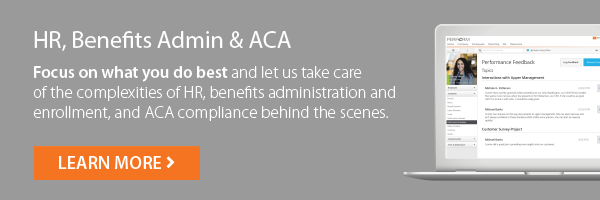Overtime regulation by the DOL is one of the most watched compliance issues by employers, and for good reason: Misclassifying employees or underpaying overtime wages can result in enormous financial consequences for a business.
If you’re struggling to understand general overtime pay requirements and don’t know which areas to stay updated on, don’t worry—we’ve got you covered. The easiest place to start is to make sure you’re properly classifying your employees.
How are exempt and non-exempt employees classified under labor laws?
All employers must classify job roles for either exempt or non-exempt employees. Misclassifying employees can not only cause confusion for both you and your employees but could also end up costing you a lot of money.
At the highest level, non-exempt employees are paid an hourly rate and have variable schedules, requiring compensation for overtime hours. Exempt employees, on the other hand, receive a fixed salary and typically work a “9-to-5” job, without overtime pay.
But the DOL has some highly specific rules that can make employee classification a real minefield.
What Is an Exempt Employee?
Most exempt employees are those who are paid an annual salary—not an hourly rate—and are not subject to overtime hours or time tracking. They generally work in office or non-manual work. Although most employers dictate in their employee handbooks that an exempt employee must work 40 hours per week, the DOL doesn’t mandate a minimum number. To qualify for exemption, employees must meet the following three tests:
- Current minimum wage requirements of $35,568 per year ($684 per week).
- Paid on a consistent salaried basis.
- Performs specific job duties. Exempt employees generally perform relatively high-level duties regardless of job title. These employees are referred to as white-collar workers because they are highly skilled, trained professionals who perform their primary duties in an office or home office setting. Many white-collar workers either provide services to clients, businesses, or government agencies.
Note: Job titles do not dictate exempt status. For an exemption to apply, an employee’s specific job duties and salary must meet all the requirements of the DOL’s regulations. Check the DOL’s Fair Pay Fact Sheets for more detailed information about the specific duties that must be performed in order to meet the requirements of the white collar exemptions.
What Is a Non-Exempt Employee?
Non-exempt employees are paid an hourly wage, rather than on a salaried basis, and those who work more than 40 hours per week are entitled to time and one-half of their regular rate of pay for each hour of overtime worked.
Can Non-Exempt Employees be Salaried?
Non-exempt employees can be salaried. While they’re typically paid on an hourly basis, non-exempt employees can also be paid a salary, on commission, or by piece-rate. They are paid a set salary each week regardless of hours worked, and they also receive overtime pay.
Fair Labor Standards Act Updates
The Fair Labor Standards Act (FLSA) mandates that most employees in the United States be paid at least the federal minimum wage for all hours worked and overtime pay for working more than 40 hours per week. However, the FLSA provides an exemption from both minimum wage and overtime pay for individuals who are employed as bona fide executive, administrative, professional, outside sales, certain highly compensated employees, and certain computer professional employees. The law also includes exemptions for specific types of workers in unique industries.
In 2024, the DOL issued regulations that would’ve raised the salary threshold for exemption and automatically updated the threshold every three years. But a Texas federal judge vacated the 2024 Overtime Rule saying the agency exceeded its authority and thus re-established the salary threshold at the 2019 level of $35,568 per year ($684/week). EAP employees are considered exempt and not eligible for overtime pay if their salary is higher than the threshold.
Use our calculator to calculate overtime pay for your employees.
How Paycor Helps
As your organization considers how to prepare for and comply with possible DOL updates, we’ve created this DOL quickstart guide that outlines proposed changes, provides tips to manage affected employees, and offers a checklist of key details to follow to mitigate risk.
Check out our DOL quickstart guide that gives you key details on the overtime rule and can help you mitigate risk. As many companies have learned the hard way, improperly classifying employees as exempt can lead to serious fines from the Department of Labor. Don’t make the same mistake. Paycor’s Support Center gives our customers access to a knowledge base of HR tips, alerts, checklists, and templates to help reduce the risk of non-compliance. In addition, our customer portal provides online case management and live chat functionality with Paycor advocates (not a chatbot).
Reach out to us to learn more.
Paycor is not a legal, tax, benefit, accounting or investment advisor. All communication from Paycor should be confirmed by your company’s legal, tax, benefit, accounting or investment advisor before making any decisions.










